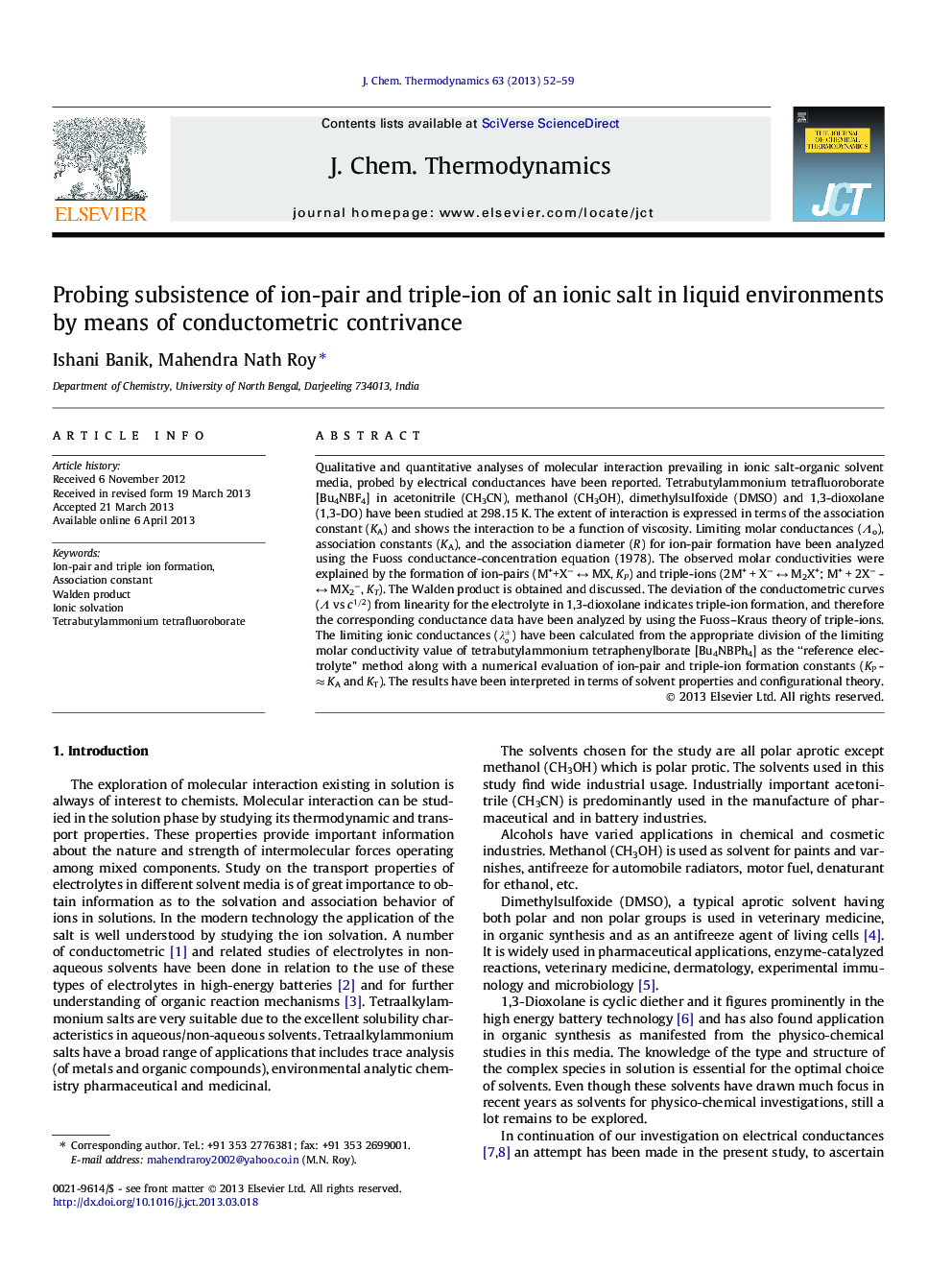| Article ID | Journal | Published Year | Pages | File Type |
|---|---|---|---|---|
| 215960 | The Journal of Chemical Thermodynamics | 2013 | 8 Pages |
•Study of ion-solvation of [Bu4NBF4] in CH3CN, CH3OH, DMSO, and 1,3-DO.•Triple-ion formation in 1,3-Dioxolane.•Ion–solvent interaction is stronger in DMSO.•Ion–solvent interaction dominates over ion–ion interaction in the studied solutions.
Qualitative and quantitative analyses of molecular interaction prevailing in ionic salt-organic solvent media, probed by electrical conductances have been reported. Tetrabutylammonium tetrafluoroborate [Bu4NBF4] in acetonitrile (CH3CN), methanol (CH3OH), dimethylsulfoxide (DMSO) and 1,3-dioxolane (1,3-DO) have been studied at 298.15 K. The extent of interaction is expressed in terms of the association constant (KA) and shows the interaction to be a function of viscosity. Limiting molar conductances (Λo), association constants (KA), and the association diameter (R) for ion-pair formation have been analyzed using the Fuoss conductance-concentration equation (1978). The observed molar conductivities were explained by the formation of ion-pairs (M++X− ↔ MX, KP) and triple-ions (2M+ + X− ↔ M2X+; M+ + 2X− ↔ MX2−, KT). The Walden product is obtained and discussed. The deviation of the conductometric curves (Λ vs c1/2c1/2) from linearity for the electrolyte in 1,3-dioxolane indicates triple-ion formation, and therefore the corresponding conductance data have been analyzed by using the Fuoss–Kraus theory of triple-ions. The limiting ionic conductances (λo±) have been calculated from the appropriate division of the limiting molar conductivity value of tetrabutylammonium tetraphenylborate [Bu4NBPh4] as the “reference electrolyte” method along with a numerical evaluation of ion-pair and triple-ion formation constants (KP ≈ KA and KT). The results have been interpreted in terms of solvent properties and configurational theory.
Graphical abstractFigure optionsDownload full-size imageDownload as PowerPoint slide
